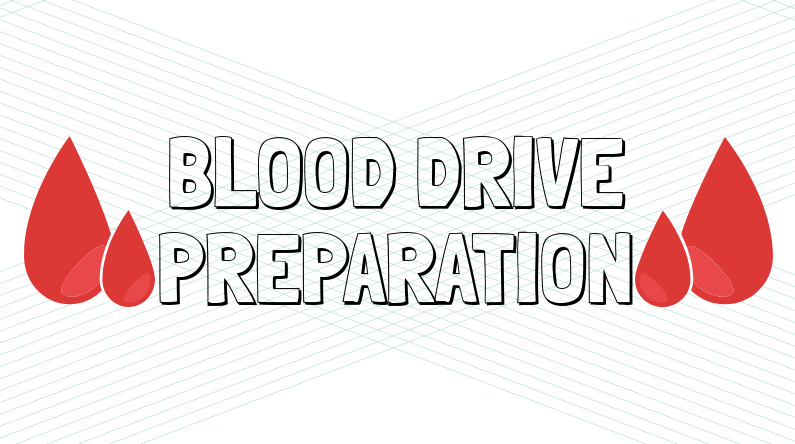How To Prepare for A Blood Drive
October 13, 2017
Less than 38 percent of the population is eligible to give blood or platelets. Credit: Olivia Fernandez/ Achona Online
Academy’s annual Blood drive was held on Friday Oct. 13. AHN’s very own Interact Club has held the event for 21 years.
Chemistry teacher and Moderator of Interact Club, Rebecca Zambrano said, “We are a service club, and part of our service is to get students to donate blood. We’re trying to get them to start donating in high school, so that later on in life they can go to a blood drive and be comfortable with the environment.”
Throughout the event, many questions arise from first time donors. Below is a list of ways to help donors ensure their donation process is as safe, successful, and pleasant as possible.

Things To Do Before Donation:
- Drink an extra 16 oz. of water/fluids
One of the most important ways to prepare for blood donation is to hydrate. To prevent fainting and dizziness after donation, be sure to drink an extra 16 ounces of water beforehand.
- Maintain a healthy iron level and eat healthy
Since blood production requires a sufficient amount of iron, make sure to eat a nutritious and iron rich breakfast. Iron rich breakfast foods can consist of spinach, eggs, yogurt, and even strawberries. It is also important to stay clear of fatty foods such as butter, doughnuts, and muffins. A sufficient amount of fat in your blood can will make the blood invalid for disease testing – making it unusable.
- Remember to bring your identification
Students under the age of 16 are required to bring with them not only a valid driver’s license, but a signed permission form with parental consent to give blood. Students over the age of 16 are only required to bring their driver’s license.
Things To Do During Donation:
- Don’t wear your sweatshirt
The easiest way to give blood is to wear something that won’t get in the way of where the blood will be taken from. It’s recommended to not wear a sweatshirt, so that there’s nothing to roll up that would block the insertion site.
- Relax and talk with other donors
When it comes to giving blood, it’s easy to allow nerves overcome you This can harm the process in doing so. One of the best ways relax is to start a conversation up with other donors. Not only will it get the idea of giving blood out of your head, but theirs as well.
- Listen to music
Another way get your mind off the idea of giving blood is by listening to music. Make a Spotify playlist of your favorite songs beforehand to distract you from the donation.

Things To Do After Donation:
- Drink an extra 16 oz. of water/fluids
After donating, it’s extremely important to replenish your system by refueling your body with plenty of fluids and iron rich foods. After the donation is finished, you are required to rest for a bit to ensure that you aren’t experiencing dizziness or lightheadedness. This is the perfect opportunity to hydrate and snack!
- Rest if you feel lightheaded
Doing strenuous activities such as heavy lifting or rigorous exercises can cause you to feel faint, so it is strictly not advised. If you do feel faint or dizzy, lie down and rest with your feet elevated to increase blood flow.
- If there is a bruise where the needle was inserted – apply a cold compress
A common side effect of drawing blood is bruising near the insertion site. The bruising is caused by bleeding under the skin, which occurs when there is injury to blood vessels. A quick fix to healing the bruise is to apply a cold compress such as an ice pack to the area.
Donating blood can be a simple process, as long as the steps needed to ensure it goes smoothly are followed.
“There’s no substitute for human blood there’s no such thing as synthetic blood.” Zambrano said.
In fact, a single car accident victim can require 100 pints of blood for transfusion. With just one blood donation, someone else’s life can be saved.

